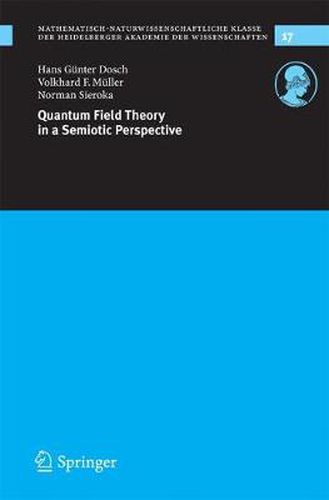Readings Newsletter
Become a Readings Member to make your shopping experience even easier.
Sign in or sign up for free!
You’re not far away from qualifying for FREE standard shipping within Australia
You’ve qualified for FREE standard shipping within Australia
The cart is loading…






This title is printed to order. This book may have been self-published. If so, we cannot guarantee the quality of the content. In the main most books will have gone through the editing process however some may not. We therefore suggest that you be aware of this before ordering this book. If in doubt check either the author or publisher’s details as we are unable to accept any returns unless they are faulty. Please contact us if you have any questions.
In this essay we discuss epistemological implications of relativistic quantum field theory. The empirical domain of such a theory is formed by phenomena ascribed to subnuclear particles, sometimes still called elementary particles. This latter more traditional design at ionrejects the lasting desire of physicists to eventually second and isolate irreducible constituents of matter. Going down to the atomic level, electrons appear to play such a role, whereas the nuclei of atoms can be considered as compound systems of protons and neutrons, i. e. of two species of particles. This view makes sense, since the respective number of these two types of constituents essentially identifies an atomic nucleus. Extracted from a nucleus, however, the ‘free’ neutron is an unstable particle: it decays spontaneously into a proton, an electron and an anti-neutrino. In the past fifty years or so basically the bombardment of matter by protons or by electrons in specially devised experiments has revealed a large variety of further subnuclear objects. Successive generations of accelerators and refined collision devices provided higher and higher collision energies. All theses- nuclear objects are termed ‘particles’ in the physics community, nearly all of these objects are unstable and decay spontaneously into other ones. The respective lifetimes of the distinct types, however, differ widely, ranging from 3 - 25 relatively long(10 sec) to extremely short(10 sec). Because of this huge disparity in lifetime the notion of a particle deserves particular attention, a point laid stress on in our consideration. The study of the physical behaviour of these subnuclear particles led to distinguish three types of interactions: the strong, the electromagnetic and the weak interaction. As the names suggest these interactions differ in their respective strength.
$9.00 standard shipping within Australia
FREE standard shipping within Australia for orders over $100.00
Express & International shipping calculated at checkout
This title is printed to order. This book may have been self-published. If so, we cannot guarantee the quality of the content. In the main most books will have gone through the editing process however some may not. We therefore suggest that you be aware of this before ordering this book. If in doubt check either the author or publisher’s details as we are unable to accept any returns unless they are faulty. Please contact us if you have any questions.
In this essay we discuss epistemological implications of relativistic quantum field theory. The empirical domain of such a theory is formed by phenomena ascribed to subnuclear particles, sometimes still called elementary particles. This latter more traditional design at ionrejects the lasting desire of physicists to eventually second and isolate irreducible constituents of matter. Going down to the atomic level, electrons appear to play such a role, whereas the nuclei of atoms can be considered as compound systems of protons and neutrons, i. e. of two species of particles. This view makes sense, since the respective number of these two types of constituents essentially identifies an atomic nucleus. Extracted from a nucleus, however, the ‘free’ neutron is an unstable particle: it decays spontaneously into a proton, an electron and an anti-neutrino. In the past fifty years or so basically the bombardment of matter by protons or by electrons in specially devised experiments has revealed a large variety of further subnuclear objects. Successive generations of accelerators and refined collision devices provided higher and higher collision energies. All theses- nuclear objects are termed ‘particles’ in the physics community, nearly all of these objects are unstable and decay spontaneously into other ones. The respective lifetimes of the distinct types, however, differ widely, ranging from 3 - 25 relatively long(10 sec) to extremely short(10 sec). Because of this huge disparity in lifetime the notion of a particle deserves particular attention, a point laid stress on in our consideration. The study of the physical behaviour of these subnuclear particles led to distinguish three types of interactions: the strong, the electromagnetic and the weak interaction. As the names suggest these interactions differ in their respective strength.